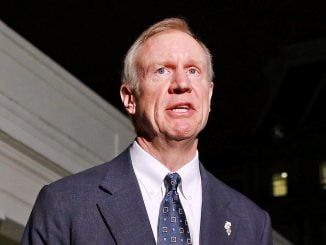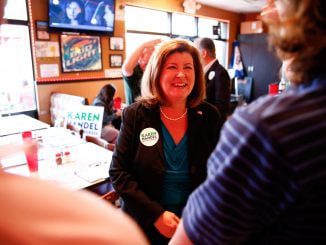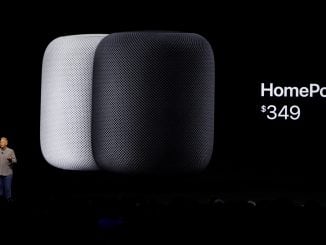
PHILADELPHIA — Triple H walked with his arms crossed like an X — his signature Degeneration X symbol — with his 7-foot tag-team partner, Joel Embiid, to ring a ceremonial bell last month before a Philadelphia 76ers playoff game.
His theme music blared through the arena, and nearly 19,000 fans hanging from the rafters roared when the wrestler hoisted his bad-guy weapon-of-choice sledgehammer and struck the bell.
Sure, the setting wasn’t WrestleMania — though Triple H lost a match in the same building when the event was held there in 1999 — but for the superstar-turned-executive, the frenzied atmosphere was a reminder of what WWE lost during the 16 months it ran without live events and raucous crowds.
“It was a fun opportunity to get back into an arena packed full of fans and have them go nuts,” said Triple H, known these days as WWE executive Paul Levesque. “That adrenaline rush, there’s nothing like it.”
WWE hasn’t been the same without its “Yes!” chants or “This is Awe-some!” singsongs once the pandemic relegated the company to running empty arena matches every week with a piped-in soundtrack and virtual fans.
No more.
With most American sports leagues settled in to their old routines, WWE ditched its stopgap home in Florida and resumed touring last Friday night with “Smackdown” from Houston, a pay-per-view Sunday in Texas and Dallas on Monday for the flagship “Raw” TV show on USA. WWE spruced up sets, brought back old stars and hit the reset button on TV programming humbled with record-low ratings and a strong need for new stars.
“I do think if we were doing this in front of the live crowd, it would have been a situation that would have made me an even better performer,” Reigns said. “As a live performer, that simultaneous response keeps you sharp. We had to adjust and adapt to the times that were in front of us.”
With Hulk Hogan in the house, WWE held their only WrestleMania with fans this past April 10 and 11 at Raymond James Stadium. WWE last ran a weeknight televised event with a paid crowd on March 9, 2020, in Washington. WWE then moved to its in-house performance center in Florida on March 13, before setting up what it dubbed The ThunderDome — where fans registered for spots on LED digital videoboards — for stretches in Florida at the Amway Center, Tropicana Field and the Yuengling Center.
“People like Roman have been able to emotionally bring a performance that, maybe with people cheering over him, or booing over him or going into different directions over him,” have benefited, Levesque said. “But that’s the beauty of what we do, to go be entertained, however you want to be entertained. As a performer, sometimes that’s difficult.”
WWE’s July 5 “RAW” on USA Network hit 1.472 million viewers, the lowest in the 28-plus year history of the show.
Levesque, WWE EVP of global talent strategy and development, said the company would “take a hard look” at how it can attract more fans to the product each week. WWE can only hope the combination of live crowds and the return of box office attractions such as Becky Lynch, Goldberg, and Cena can ignite interest and grow ratings during the build to the marquee Aug. 21 SummerSlam at the home of the Las Vegas Raiders.
“It never is one thing,” Levesque said. “We see this as a moment in time to shift everything. I think you’ll see it in just the layout of everything, the set designs, the way it’s presented. There’s a greater emphasis on utilizing the spaces that we have and the TV aspect of it while still engaging the fans. A lot of that comes from the time we had to experiment inside the ThunderDome.”
The first start is putting fans — holding their homemade signs and wearing their catchphrase T-shirts — back in the seats.
“When we have that live crowd, sometimes they almost become the cameras for a lot of the performers,” Reigns said. “But when you don’t have that real-time, flesh interaction, the red light becomes the focal point for the performer.”



